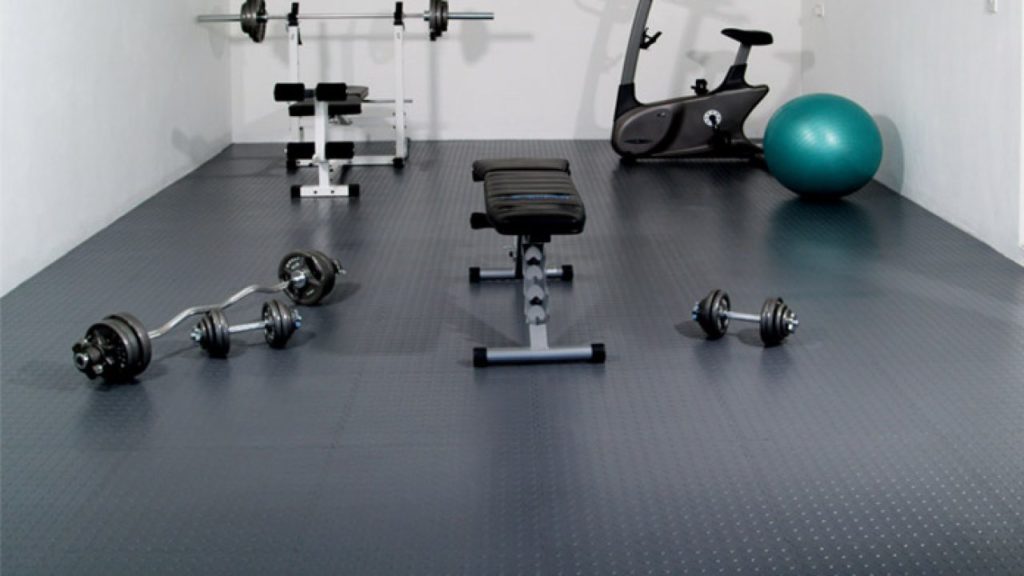More and more people are turning towards using exercise equipment at home as an alternative to a gym membership. With this rise in home gyms, whether that is a dedicated room or it’s just a space you use temporarily before packing away your kit, there is an increased need for floor protection.
Machines like treadmills, cross trainers and rowing machines can scuff and scratch wood, laminate and vinyl or linoleum flooring, as well as cause damage to carpets. Similarly, using free weights, benches or weight machines can also be harmful to your floors.
The solution to these problems is a dedicated, high quality rubber gym mat.
Aesthetics and comfort
The more comfortable you find your gym space, both physically and aesthetically, the more likely you are to love being there – and therefore the more likely you are to look forward to your workouts instead of dreading them, and the more likely you are to extend your exercise routines rather than rushing through them.
Lots of people work out in their garage, which will generally have a concrete floor. While this might seem durable (it can easily chip, though) it is cold and lacks any comfort – putting a rubber mat on top of concrete is an easy and cost-effective way of optimising the space.
If your exercise routine includes body weight exercises like press-ups, crunches or sit-ups, you’ll find that rubber matting is significantly more comfortable than any other surface – even a plush carpet can leave hands and feet with friction-related discomfort.
Protection
No matter the flooring type it will become damaged through use as a gym floor. Dropping weights will break floorboards over time, chip concrete (if you are using your bare-floored garage, for example), smash through laminate and wood flooring and wear away at carpets. Exercise machines may not be quite as overtly destructive, but dragging them in and out of position and the inevitable slight shifting that occurs when they’re being used will scratch hard floors and leave bald patches on carpeting. A rubber mat will protect all types of flooring, as well as protecting your equipment.

Safety
Your gym floor can also be a great health and safety feature. Moving about with weights or engaging in body weight exercises on a potentially slippery floor can be very dangerous, the lack of traction can cause slips and falls, as well as overstretching and straining. Rubber flooring provides the grip you need, minimising the risks.
Another safety concern lies in the ability to absorb impacts. Dropping weights (deliberately or accidentally) can damage the equipment, and in some circumstances the weight can bounce and strike you. A good quality rubber mat will absorb the impact, reducing damage and making it unlikely that the weight will bounce.
What are the types of rubber flooring for use in gyms?
Now you’ve decided to install rubber matting, there’s a couple of decisions to make. This kind of flooring typically comes either in rolls or tiles, both of which are very easy to lay and lift as necessary. You can find rolls in a range of off-the-shelf sizes to suit most spaces, or you can get custom sizes if you want a more bespoke finish. Rolls can be laid end to end or side by side if you need to cover a larger or non-standard shaped space. Tiles interlock like jigsaw puzzle pieces to form a larger floor covering, and can be used to great effect if you’re looking to cover a smaller space or your room is ‘L’-shaped, for example.
Cleaning and maintenance
Rubber is a very easy material to maintain and clean. You can usually just sweep, wipe or spray the matting as necessary, and it will dry very quickly ready for use. This can be done fairly infrequently, although if you are using the matting directly on top of concrete there may be a lot of dust generated.
